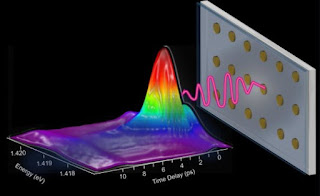The Crystallographic study suggests a blending model of
chemical solutions over a network of interconnected pipes and pumps. The master goal of this current study is to
rationalize a number of quality requirements in the network´s output. It is well known that the traditional
methodology and strategy used to tackle this kind of technical problem has been
to consider a modeling
methodology based
upon flow and quality. In this study, we
suggest a new model and the overall method has been focused on the actual
feasibility and throughout the course of the current study it is shown that,
the whole process is reduced to a non-convex problem.
A rather
complete and informative analysis of the intermolecular and intermolecular
potentials is put forward with reference to the lanthanide
type systems, such as in the, space group. A particular situation occurs in both extreme
of the series, say for and
respectively. The thirteen trivalent
lanthanide ions, moving along the series from
to , for these ions the shell is not fully occupied and therefore the
physical and chemical properties are indeed, somehow challenging and
interesting to examine using structural, spectroscopic and theoretical methods
and model calculations.
Using these methods of mining and mineralogy there has been
development and many implementation in the new model by employing a numerical
analysis method and the results obtained show up to be quite sensible and
consistent so as to provide sound and realistic solutions. This area of research
is quite relevant since new mobile technology; digital cameras, laptops and electro mobility and so forth
have become essential to humankind. It is, well known that the operational
availability is limited by the quality of the batteries employed. Prolonged
operative life per load requirements has motivated research aimed to develop a
new technology of energy storage. There are several options, nevertheless in
this specific study we have chosen batteries based in Lithium since they have become attractive and highly efficient, due
to the characteristic of this chemical element (Z=3). In this research a
feasibility problem is modeling using a least square objective function over a
convex polyhedral, where the only variables are the ones related to flow and
the quality variables are “transferred” to the objective function, reducing the
complexity of the constraints which makes the problem amenable to traditional
techniques which are easy to implement. The Frank-Wolf´s method was used to
solve the complex problem with a quite satisfactory performance. From a model
viewpoint, this is a new approach and we believe that this methodology and
strategy could seduce researchers to make improvements for the whole model
presented in this article.
In this
current research work, we have elaborated some physical models and carried out
a substantial amount of calculations, so as to estimate the reticular energy
and also, employing a thermodynamic Born-Haber cycle, we have been able to make
some sound predictions and numerical estimate of heat of formations for the
above series of lanthanide
type crystals. The calculated energy values associated
with these observables seems to be most reasonable, and these follow the
expected trends, as may be anticipated from theoretical and experimental
grounds. Both, the advantages and disadvantages of the current model
calculations, have been tested against other previous calculations performed.














